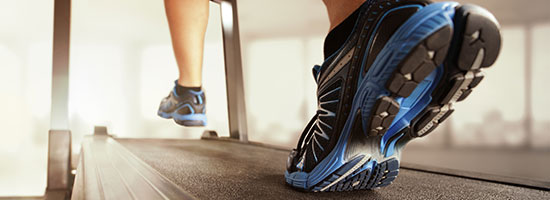
Top Running Injuries and How to Avoid Them
From better cardiovascular health to improved muscle strength and flexibility, there’s no denying the many health benefits of leading an active life. If running is your preferred form of exercise either for your own enjoyment or competitively, you’re probably aware of the occasional aches and pains sometimes associated with it. Should you find yourself dealing with any of the following foot and ankle injuries common among runners, a podiatrist can determine the best way to restore your comfort.
Plantar Fasciitis
A common cause of heel pain, plantar fasciitis is the inflammation of thick tissues between the toes and heel bone. Symptoms tend to be worse in the morning and appear gradually. It can result from excessive stress placed on the bottom of your feet while running or jogging. Prevent it by wearing supportive shoes and avoiding over-training.
Achilles Tendinitis
Caused by a gradual breakdown of fibers in the middle of a large tendon that connects the heel to the lower calf, Achilles tendinitis is an inflammatory condition that often produces dull, sharp pain. Prevent it with proper stretching, arch supports to correct alignment issues, and avoiding over-extending your foot motions while running.
Morton’s Neuroma
Characterized by burning or stinging pain, Morton’s neuroma is a condition that affects nerves around toes as tissues thicken. Early symptoms may include numbness or tingling sensations in toes. Prevent it by wearing supportive shoes that allow for enough room for your toes and opting for “breathable” socks.
Stress Fracture
Typically occurring within any of the five large bones in the foot (metatarsal bones), stress fractures are caused by repetitive forces and motions. Pain and swelling from stress fractures often gradually gets worse over time as the fracture becomes more severe. Prevent it by replacing worn running shoes that no longer provide sufficient support.
Shin Splints
Affecting the front of the lower leg, shin splints (tibial stress syndrome) are common among runners who suddenly intensify their training routine. The resulting inflammation of muscle, tendon, and bone tissues often produces shooting pain that’s hard to ignore. Prevent it by stretching shins and toes and wearing quality running shoes.
Another way to avoid running injuries is do a proper warm-up before you get started. Foot-specific warm-ups may include leg lifts combined with foot and ankle rotations. If you do experience any unusual or sudden foot or ankle pain during or after a run, take a few days to rest to allow tissues to heal. For pain that’s severe or getting worse instead of better, a podiatrist can determine the source of the problem and suggest treatment options.












